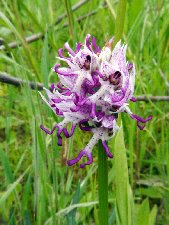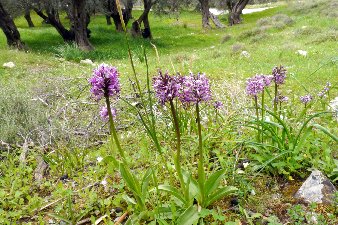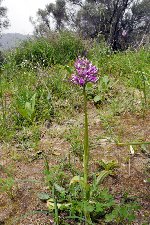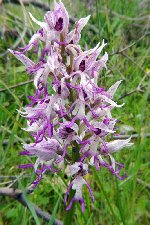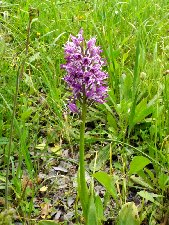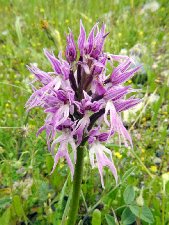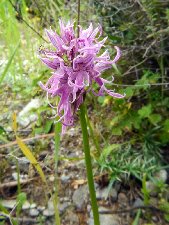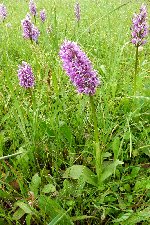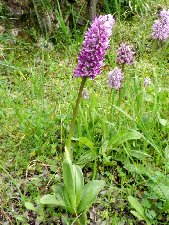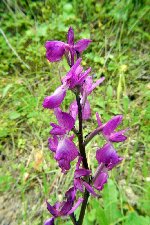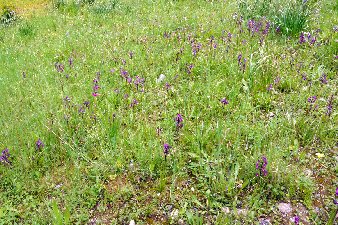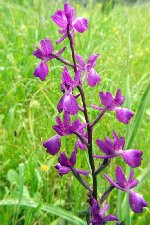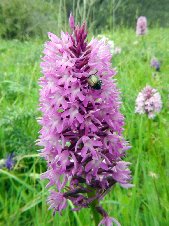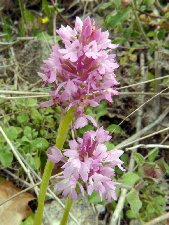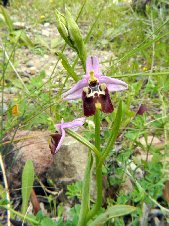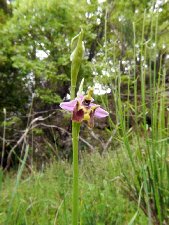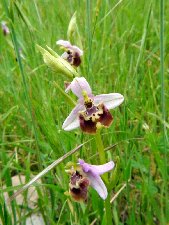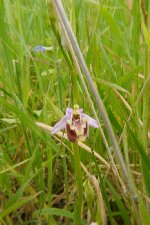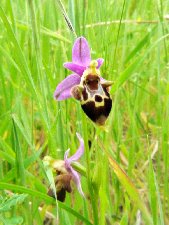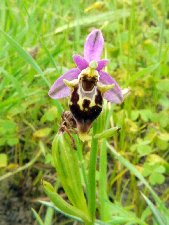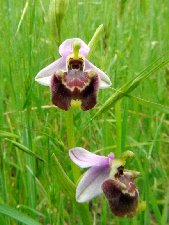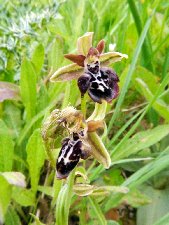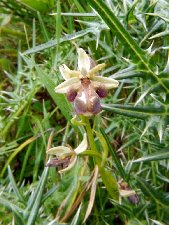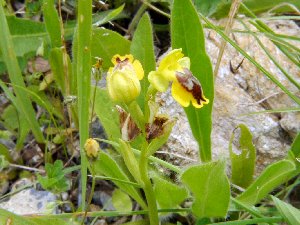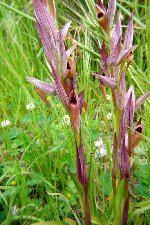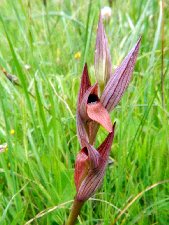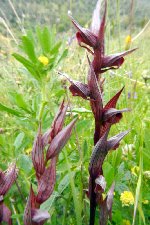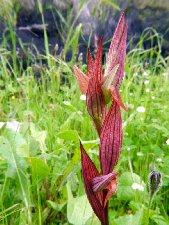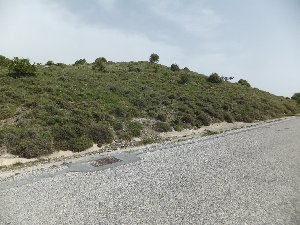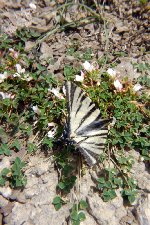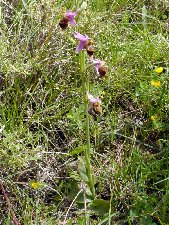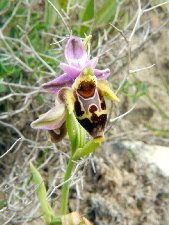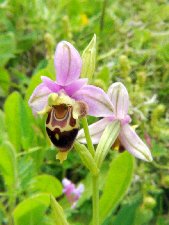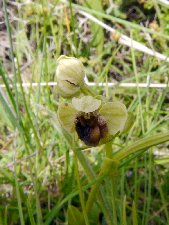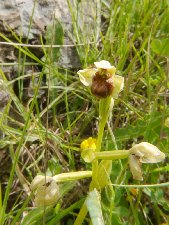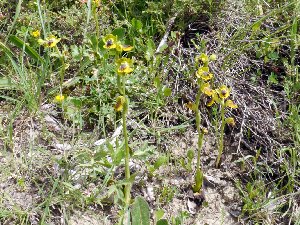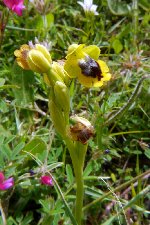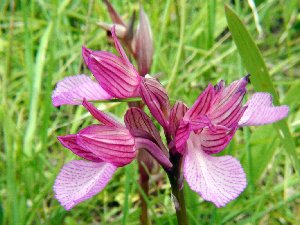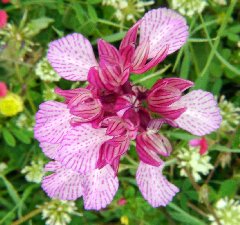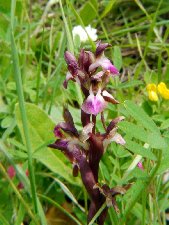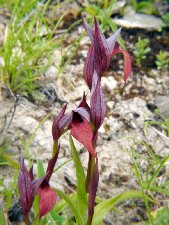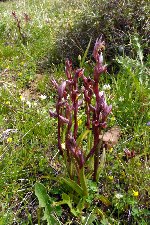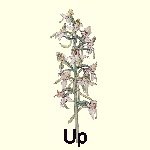|
|
|||||||||||
|
|
|||||||||||
 |
|
Near Fourfouras 12th April 2018 (35.21856, 24.70918) Today we leave Rethymno by a different route, as we are taking in another monastery on the way to the orchids. The sites chosen are further to the west than previously and lie on the foothills of Mount Ida ner the village of Fourfouras. First off is an olive grove which happily unfenced and which boasts a great orchid flora. I could build up to the star of the show here, but will jump in and say that there is a wonderful population of Orchis simia. In fact, this olive grove probably has more Monkey Orchids than the whole of the U.K! I love this species. A chaotic blob of anthropomorphic flowers, with purple twisted arms and legs in all directions. There is also a strong presence of Orchis italica here. Kreutzmarr includes a hybrid of the two species, but describes it as `questionable'. I think this site has possible evidence of hybridisation. The first two picture below show flowers close to O. italica which also have the twisted arms and legs of O. simia with characteristic rounded ends. Evidence of back crossing perhaps. Other plants, with more typical O. simia flowers and leaves are brutes compared to the others. This is quite typical of hybrid vigour. Large numbers of closely related orchids in a confined area have a good chance of hybridisation. The other orchid here in large numbers is Anacamptis laxiflora. They are largely concentrated at the back of the grove in what must be a damper patch of ground. A lovely splash of vivid purple. Also to be seen was A. collina, way past its best. A. pyramidalis also feature here with some in an almost orangey salmon-pink which just does not show up in the photographs. The Ophrys genus has a few species scattered about the olive grove. Both Op. epicopalis (with some nice variation of lip pattern) and Op. heldreichii can be found (note the different background vegetation), as can Op. cretica and one on its way out which I have assumed to be Op. mammosa. Op. phryganae also pops up here and there. One flower I originally took for Op. epicopalis actually may be Op. candica, its second only appearance for me this week.
Rounding off this location, and emphasising that it is more of a meadow habitat than phrygana, are condsiderable numbers of Serapias lingua and begonii, often adjacent to each other and contrasting well. There is, like at other sites visited, a number of orchids that have gone over and I lack the expertise to identify them in the fruiting state. Nothing I have seen relating to the site gives me a clue as to where to start. Near Fourfouras 12th April 2018 (35.19722, 24.71792) More phryg', about 2« miles south of the village. Unfortunately there is nothing new here to see, but despite first impressions from the road it does number a good species here. It does provide me with a chance to take a snap of a Tiger Swallowtail butterfly. Unbelievable swift fliers, this one landed and fed just long enough for one shot.
|
|
|
||||||||||||||
